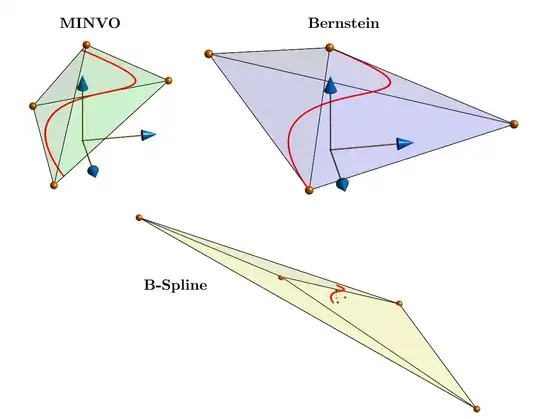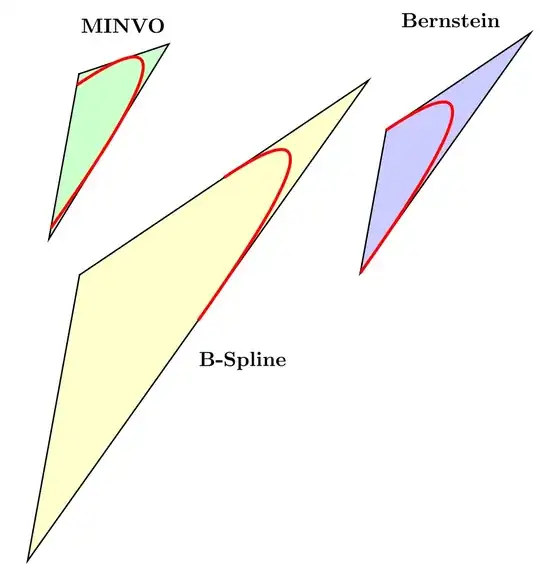It is well known that a Bézier curve is contained within the convex hull of its control points. This is basically a consequence of the fact that the Bernstein polynomials are non-negative and sum to $1$. The property is useful in a variety of ways, as explained in these answers.
However, the convex hull is often quite a bit larger than the curve itself, and is not a "tight" fit. This leads to inefficiencies when using the convex hull in computations (e.g. intersection calculations).
Is there some other simple enclosing shape that is a tighter fit and is reasonably easy to calculate?
For example, for a quadratic Bézier curve with control points $\mathbf{P}_0$, $\mathbf{P}_1$, $\mathbf{P}_2$, the quadilateral with corners $\mathbf{P}_0$, $\tfrac12(\mathbf{P}_0 + \mathbf{P}_1)$, $\tfrac12(\mathbf{P}_1 + \mathbf{P}_2)$, $\mathbf{P}_2$ is a much tighter fit than the triangle with vertices $\mathbf{P}_0$, $\mathbf{P}_1$, $\mathbf{P}_2$. In fact, the quadrilateral is only two-thirds the size of the triangle (measured by area).
For a cubic curve with control points $\mathbf{P}_0$, $\mathbf{P}_1$, $\mathbf{P}_2$, $\mathbf{P}_3$, it's reasonable to try the quadrilateral with corners $\mathbf{P}_0$, $\tfrac14\mathbf{P}_0 + \tfrac34\mathbf{P}_1$, $\tfrac34\mathbf{P}_2 + \tfrac14\mathbf{P}_3$, $\mathbf{P}_3$. This almost works, but not quite -- the curve creeps a little bit outside of the quadrilateral.
Edit:I want an enclosing shape that is a single convex polygon. Obviously you can get an arbitrarily tight bounding shape by subdividing the curve and constructing bounding shapes for the individual pieces (as in Yves Daoust's answer below). But that's not what I want.

